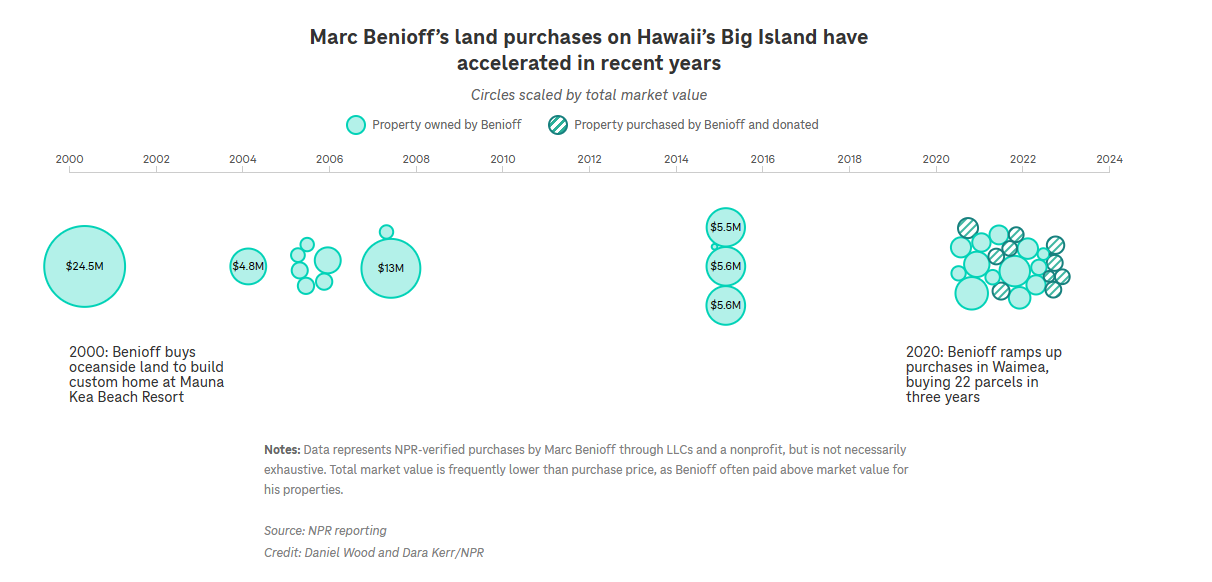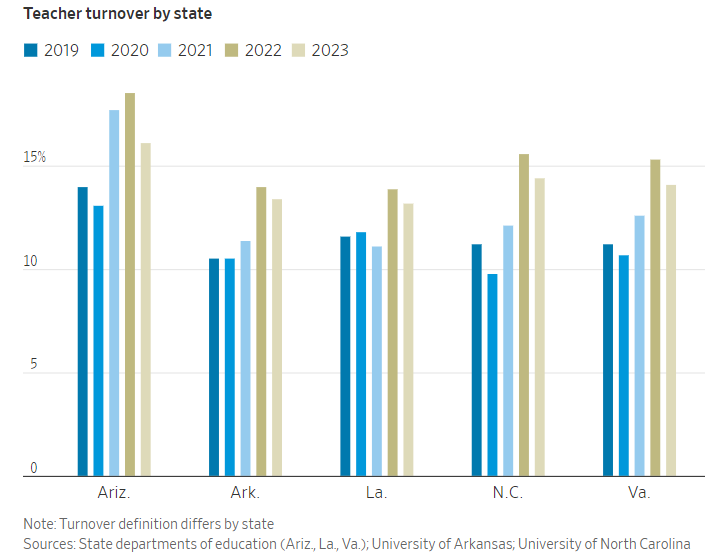1. Mag 7 Dispersion 2024
Jim Reid Deutsche Bank

2. FANG+ Short-Term Overbought/Oversold
Dave Lutz at Jones Trading Bespoke notes that Mega-cap divergence is real – AAPL is now more than three standard deviations below its 50-DMA. It hasn’t been this oversold since March 16th, 2020, in the throes of the COVID Crash.

3. SMH-Semiconductor ETF
Huge increase in semi stocks….leaves RSI overbought at 83

4. Chart Update…NYCB Bank Did Break Below GFC 2008 Lows
I did not think I would see a bank break below 2008 crisis lows in my lifetime

5. Price Changes Cumulative Since May 2020
Jack Ablin-Cresset

If the US Economy Is Doing So Great, Why Are Americans So Glum? | Cresset Capital
6. Top 15 Wealth-Destroying Funds Over Past 10 Years
Morningstar Amy C. Arnott, CFA

https://www.morningstar.com/funds/15-funds-that-have-destroyed-most-wealth-over-past-decade
7. Bloomberg -Uninsurable Home Crisis 2018
By Leslie Kaufman,Saijel Kishan and Nadia Lopez

8. Salesforce Marc Benioff Buying Up Land in Hawaii
The Daily Shot Brief-Commodities: Gold is diverging from gold miners.

Billionaire Marc Benioff is buying up land in Hawaii. And no one knows why : NPR Found at Morningbrew https://www.morningbrew.com/daily
9. Teacher Leaving the Profession in High Numbers
WSJ By Matt Barnum Public-school teachers like Sumner are still leaving the profession in higher numbers than before the pandemic, a Wall Street Journal analysis of data from 10 states show, though departures have fallen since their peak in 2022. The elevated rate is likely due to a combination of factors and adds one more challenge to schools battling learning loss and frequent student absences.
“This is still a discouraging story,” said Katharine Strunk, dean of the University of Pennsylvania’s Graduate School of Education. ”I don’t think this level of consistent attrition is sustainable for the school system.”

https://www.wsj.com/us-news/education/teachers-leaving-quitting-schools-data-302d282e
10. The Second Half of Life-Humble Dollar
The Changes Ahead
Dan Haylett
THE SECOND HALF of life isn’t just a continuation of the first. Rather, it’s an opportunity for transformation, new adventures and deepening wisdom. As we navigate these years, understanding the five key stages of this journey can help us live more joyfully and meaningfully. What five stages? Here’s a look at each:
Phase 1: Pre-Rapture. This stage, typically between ages 45 and 60, is marked by a feeling of newfound freedom and independence. With grown-up children flying the nest, you might experience a mix of emotions—pride, nostalgia and perhaps a sense of loss. This is also, however, a time of great opportunity.
It’s a period to rediscover yourself, invest in hobbies or career paths you’ve always wanted to explore, and strengthen your relationships beyond your parental role. This phase sets the foundation for a fulfilling second half of life.
Phase 2: Transition. This is the prelude to retirement, when you start to ease out of full-time work. This could involve shifting to part-time or consulting work, or even beginning a completely new, less demanding career.
It’s a time for preparation—financially, emotionally and socially—for the full retirement that lies ahead. This stage is crucial: It helps you gradually adapt to a new way of living, ensuring the change isn’t abrupt, but instead a smooth segue into the joys of retirement.
Phase 3: Rapture. Welcome to the rapture stage—the golden early years of retirement, when you can live out the dreams you’ve been harboring for years. Whether it’s traveling to exotic places, dedicating more time to hobbies, volunteering, or spending quality time with family and friends, this stage is about fulfillment and enjoyment.
You might still be working in some capacity. But the difference now is that it’s on your terms. It’s a time of exploration, learning and experiencing the beauty of unstructured time.
Phase 4: Post-Rapture. In this stage, things start to slow down. Our late-retirement years are about finding joy in the quieter, more stable aspects of life. Your focus may shift toward creating a comfortable and safe living environment, maintaining good health, and enjoying the simpler pleasures, such as reading, gardening or spending time with grandchildren. It’s a time for reflection, appreciating the small moments, and maintaining a sense of community and connection.
Phase 5: Fragility. This is the twilight of life. It’s a time when health and mobility may decline, and you become more dependent on others for care and support. This stage calls for a dignified approach to aging—acknowledging limitations while cherishing the life you’ve lived. It’s about ensuring comfort, receiving appropriate care and staying connected with loved ones. It’s also a time to pass on wisdom, share stories and leave a legacy that reflects the richness of your life’s journey.
So, what does all this mean for you? Living a rapturous second half of life is about embracing each stage with awareness and grace. By understanding and preparing for these phases, you can ensure that every chapter of your life is lived with purpose, joy and a sense of fulfillment. Remember, every stage has its beauty and its challenges, and it’s up to you to make the most of them.
Dan Haylett is a financial planner and head of growth at TFP Financial Planning, a U.K. firm that specializes in modern-day retirement planning. Dan’s “pull back the duvet every morning” purpose is helping clients spend their time and money on what’s truly important to them. A version of the above article first appeared on Dan’s website, where you can also learn about his Humans vs. Retirement podcast. Follow him on X (Twitter) @DanHaylett.
https://humbledollar.com/2024/02/the-changes-ahead/ found at Abnormal Returns www.abnormalreturns.com




































